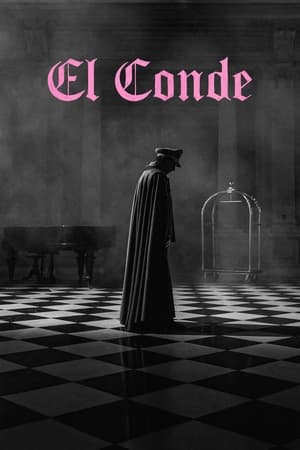
El Conde
Fusing cinematic genres can be tricky, especially if the mix doesn’t mesh. But the latest from writer-director Pablo Larraín successfully pulls off a brilliantly original blend and does so just about perfectly. This metaphorical account of the life of former Chilean dictator Augusto Pinochet (1915-2006) (Jaime Vadell) portrays the onetime-strongman as a vampire a la Dracula (hence the title and the character’s nickname, “the Count”), shot in the style of F.W. Murnau’s black-and-white silent film classic, “Nosferatu” (1922). The story charts the immortal’s life from his birth as orphaned royalist Claude Pinoche in late 18th Century France through the many military campaigns in which he fought to put down radical rebellions before finally rising to power as the right-wing dictator of Chile through the 1973 coup d’état of left-wing President Salvador Allende. But much of the narrative actually follows Pinochet in the years after he was himself out of office, living a life in seclusion after faking his death. It’s a time when he is being stalked by various parties seeking to get their hands on his illegally amassed fortune, including his wife (Gloria Münchmeyer), his longtime butler (Alfredo Castro), a nun/exorcist posing as an accountant auditing his assets (Paula Luchsinger) and his five adult children. And, ironically, as all of this is transpiring, Pinochet himself is in the throes of ennui, trying to make up his mind about whether or not he wants to go on living. Many story threads emerge and become intertwined, satirically invoking wry observations about despotism, greed, power, lust, immortality and religion. On top of all this, there’s an articulate, faceless narrator with a pronounced British accent who tells the tale and makes an unexpected appearance late in the film, taking things in an entirely new direction with deliciously twisted plot developments. Add to all this the film’s stunningly gorgeous monochrome cinematography, superb production design, fine performances and positively sparkling screenplay, along with just enough restrained campiness in the dialogue and special effects to make viewers giggle with delight without becoming silly, and you’ve got one finely crafted production, perfectly integrated and nicely balanced. Admittedly, the pacing drags a smidge late in the second act, but that’s easily dismissed considering how well everything else works together. Also, the film is quite graphic in a number of sequences, so squeamish and sensitive viewers would be wise to avoid this one. But, if you’re not faint of heart and have an appetite for the macabre, give this Netflix exclusive a look. Director Pablo Larraín’s pictures keep getting better and better with every outing, and this is the latest in a string of releases that have firmly established him as one of the finest auteurs in the business these days. Tune in and see for yourself.
